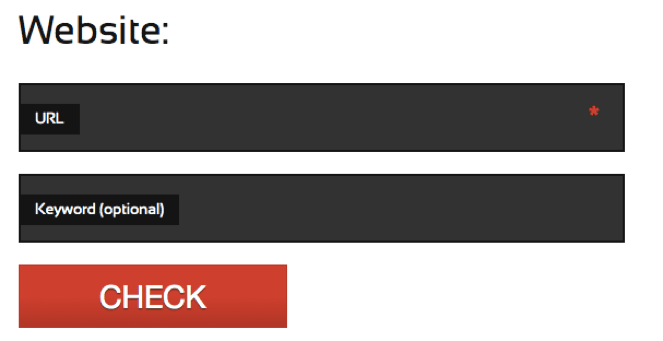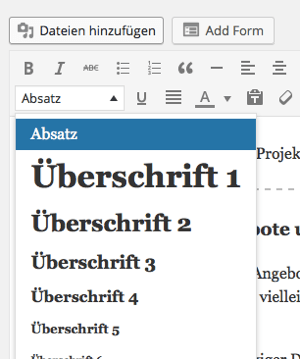An H1 tag is the HTML used to create the main title on a webpage and helps indicate the page’s primary topic to visitors and search engines. It contains an opening <h1> tag, the title text, and a closing </h1> tag.
In this guide, I’m not just going to sing the praises of content marketing. Instead, I’m going to take a deep dive into something that most people don’t talk about: a tiny slice of content marketing called H1 tags.
Truth be told, most SEOs, content marketers, web developers, and marketers know a little bit about H1s. That can be a problem, though; we’re so used to hearing about H1s, using H1s, and talking about H1s, that we don’t stop and think about how to write them in a way that appeals to users and search engines.
You’re different, though. You’re reading this article, and are going to learn the exact method for producing great H1s that will take your content marketing to the next level.
What Is an H1?
The H1 is an HTML tag that indicates a heading on a website.
Let me unpack that.
- HTML: This stands for Hypertext Markup Language. Most websites use this language to create web pages.
- Tag: An HTML tag is a snippet of code that tells your web browser how to display the content.
- Heading: HTML has six different heading tags: H1, H2, and so on. The H1 is considered the most important tag, and the H6 is the least important. The tags are often formatted from largest (or most important) to smallest (or least important).

If you were to create an H1 in HTML, it would look like this:
<h1> Hi, My Name is Header One! </h1>
The importance of the H1 tag for SEO
In search engine optimisation (SEO), the H1 tag is significant as it helps Google and other search engines to understand the structure and main content of the page. Effective use of the H1 tag helps to increase the relevance of a website for specific search terms and can positively influence the ranking within the search results.
The ideal headline structure for Google
The perfect heading structure comprises exactly one H1 heading, followed by H2 and then H3 headings, etc., similar to the table of contents of a book. Avoid illogical sequences in favour of a structured hierarchy.
- H1 (book title)
- H2 (chapter)
- H3 (sections)
- H4 (subtopics)
- H3 (sections)
- H2 (chapters)
- H2 (chapter)
How to check the headings on your website
There are two free ways to check the use of the H1 tag on your website: The first tool is Onpage.org*, which is free for websites with up to 200 pages.
The second tool, Seorch.de, enables a quick check. Here you can enter a link (e.g., a blog article) and an optional keyword to be optimised.

After a few seconds, you will receive a detailed analysis that also checks the headline structure of your website. If H1 headings are used more than once, you will be notified immediately.
In this example, the H1 heading only appears once:

In this example, the H1 heading unfortunately occurs more than once:

Changing the heading type in WordPress or Joomla
In WordPress, you can write your heading in the editor, select it, and choose the heading in the “Paragraph” dropdown menu.

Dropdowns work similarly: open a post, select the heading, and choose the desired formatting in the “Paragraph” dropdown.

If the dropdown is integrated into the template
Sometimes the H1 tag is permanently integrated into the template. It is then difficult to make changes without programming knowledge. However, a developer can usually remedy the situation in 15 to 30 minutes. If you don’t have the budget, it’s worth looking for a different template. Before choosing, you can check the template with tools such as seorch.eu for the correct use of the H1 tag.
Further SEO tips for the H1 heading
To create the perfect H1 tag for SEO, there are a few more important aspects to consider that go beyond the basic guidelines:
1. Keyword in title tag
The H1 tag should contain the primary keyword or phrase that the page is being optimised for. This helps search engines to recognise the focus and content of the page quickly. Placing the keyword at the beginning of the title can be particularly beneficial.
2. Clarity and precision
The H1 headline should clearly and precisely reflect the content of the page. Avoid overly creative or vague wording that does not immediately indicate what the page is about. A direct, meaningful headline is beneficial for both search engines and visitors.
3. Understand user intention
Understand the intention of users searching for the main keyword and design the H1 tag to match this intention. This not only improves SEO but also enhances the user experience, as visitors will find what they are looking for more quickly.
4. Uniqueness on the page
Whilst each H1 heading on your website should be unique, it is equally vital that there is no confusion between the H1 tag and other headings or elements within a page. Make sure the H1 heading stands out and serves as the primary focal point.
5. Headline length
Keep the H1 heading to an appropriate length. Headings that are too short can be insufficient to explain the content and purpose of the page, while headings that are too long can be overwhelming and get cut off by search engines. Finding a balance that effectively communicates the content is key here.
6. Consider branding
If possible, include the name of your brand or business in the H1 heading, especially if the brand is a relevant keyword. This can strengthen brand recognition and improve click-through rates, especially for search queries targeting the brand.
7. Consider responsive design
Make sure that the H1 tag and the headline are also easy to read and appealing on mobile devices. Responsive web design ensures that your content looks good on all devices, which can also improve visibility and rankings.
By taking these advanced guidelines into account, you can create an H1 tag that is not only optimised for SEO but also improves the user experience and increases the clarity and relevance of your website.
How to Optimize H1s Conclusion
If you’ve read this article, you know more about H1 tags than most people. There have been numerous trends in SEO that have come and gone, but H1s have consistently maintained their significance.


